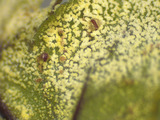
Golden back fern. Back of pinnae.Image credit: Fernando Agudelo-Silva
- Subject:
- Agriculture
- Biology
- Botany
- Forestry and Agriculture
- Material Type:
- Diagram/Illustration
- Author:
- Emily Fox
- Date Added:
- 08/22/2022

Golden back fern. Back of pinnae.Image credit: Fernando Agudelo-Silva
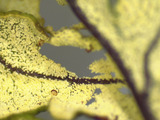
Golden back fern. Back of pinnae.Image credit: Fernando Agudelo-Silva
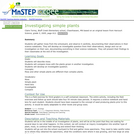
Students will observe simple plants, develop an investigable question, and form an investigation. They will document their investigation in their science notebooks.
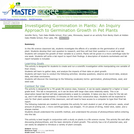
This activity is a lab activity where students grow two radish seeds, and manipulate a variable that may affect the germination time and growth of the radish seed.

This is a classroom activity where students will make plant rubbings and plant pressings of Minnesota plants.
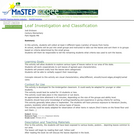
This activity is a group activity where students investigate leaves and sort them based on established criteria.
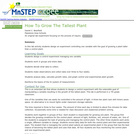
This is an activity where students learn about inquiry by designing an experiment on bean plants with the goal of growing the tallest plant. Students work in groups to plan the growing conditions of the control and three experimental plants. Students collect data for about three weeks and analyze their data to see if their hypothesis is correct or not. The end product can be a report presented in a number of ways.
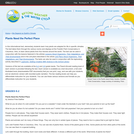
This original story about plants' dependence on the climate illustrates the theme of the issue of the online, free magazine Beyond Weather and the Water Cycle -- We Depend on Earth's Climate. The story is available at two reading levels, K-2 and 3-5. Four biomes are featured in a walk through a conservatory.
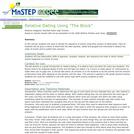
This an inqiury based activity where students are asked to sequence events that have occurred to a block of wood and justify their answers.

In this biodiversity activity, students learn how to construct their own dichotomous keys. They use either specimens they've collected or ones you bring into class, such as shells, fruit, or leaves. The one-page printable PDF includes guidelines about what students should look for and include when creating their dichotomous keys.
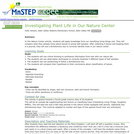
This activity is a field investigation where students use a dichotomous key to properly identify trees in our schools nature center.
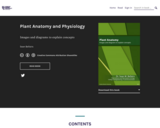
Images and diagrams to explain concepts
Word Count: 4016
(Note: This resource's metadata has been created automatically by reformatting and/or combining the information that the author initially provided as part of a bulk import process.)
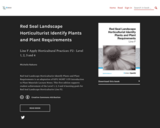
Line F Apply Horticultural Practices: F2 - Level 1, 2, 3 and 4
Short Description:
Red Seal Landscape Horticulturist Identify Plants and Plant Requirements is an adaptation of KPU HORT 1155 Introduction to Plant Materials Lecture Notes. This first edition supports student achievement of the Level 1, 2, 3 and 4 learning goals for Red Seal Landscape Horticulturist Line F2.
Long Description:
Red Seal Landscape Horticulturist Identify Plants and Plant Requirements is an adaptation of KPU HORT 1155 Introduction to Plant Materials Lecture Notes. It is an editable, open access learning resource with interactive web based experiences customized for horticulture students studying plant identification.
This first edition supports student achievement of the Level 1, 2, 3 and 4 learning goals for Red Seal Landscape Horticulturist Line F2: Identify plant and plant requirements for a range of plants commonly used in horticulture Employ correct naming and plant identification terminology Identify morphological characteristics, growing requirements, use and availability Use a dichotomous key for plant identification Explain plant hardiness Identify weedy and invasive plants Identify plant and plant requirements for a range of woody and non-woody plants Use botanical terms to identify and describe plants Identify and describe plants according to cultural and maintenance requirements Recognize plants suitable for common tropical, floral and interior landscape situations Identify plants suitable for planting in difficult situations Describe native plants common to the horticulture industry Describe seasonal plants common to the horticulture industry in BC Describe plants suitable for green infrastructure projects Describe plants suitable for edible landscapes
Word Count: 24488
Included H5P activities: 94
ISBN: 978-1-77420-083-4
(Note: This resource's metadata has been created automatically by reformatting and/or combining the information that the author initially provided as part of a bulk import process.)

This learning video introduces high school students to a topic they would not ordinarily study in school, biotechnology, and to different applications of biotechnology that relate to the main theme of the module - making the desert greener. After reviewing traditional methods used for manipulating plants to produce desired traits, students will learn about the methods of making transgenic plants. Dr. Ziad discusses a real world problem that is critical in his country, Jordan, where much of the land is desert. A prerequisite to this video lesson is some background in biology.
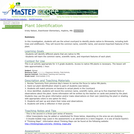
This activity is a field investigation where students identify native MN plants and record the common name, scientific name, and important information about each.
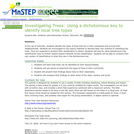
This activity is a field investigation where students explore different types of trees and identify them using leaves and classification tools.
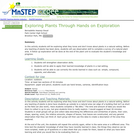
This activity is a field investigation where students gather information before and after learning about plants, which will allow you to compare the knowledge the previously know and have acquired through your teaching.
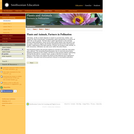
This site helps students see how plants and animals interact to accomplish pollination. Students (Grades 3-8) identify plant and animal parts involved in pollination, connections between pollination and food production, relationships between pollinators and the plants they pollinate, and ways flowers have adapted to encourage pollination.
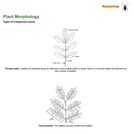
This illustrated guide is designed to help students recognize and learn the different types of compound leaves. The single Web page can be easily printed for use at field sites. Along with a short description, an illustration that identifies a leaflet and petiole is included for each type: pinnate (odd) twice pinnate pinnate (even) palmate.

This activity is a field-based investigation involving identifying and investigating common trees on the schoolyard and creating a field guide containing pressed leaves.